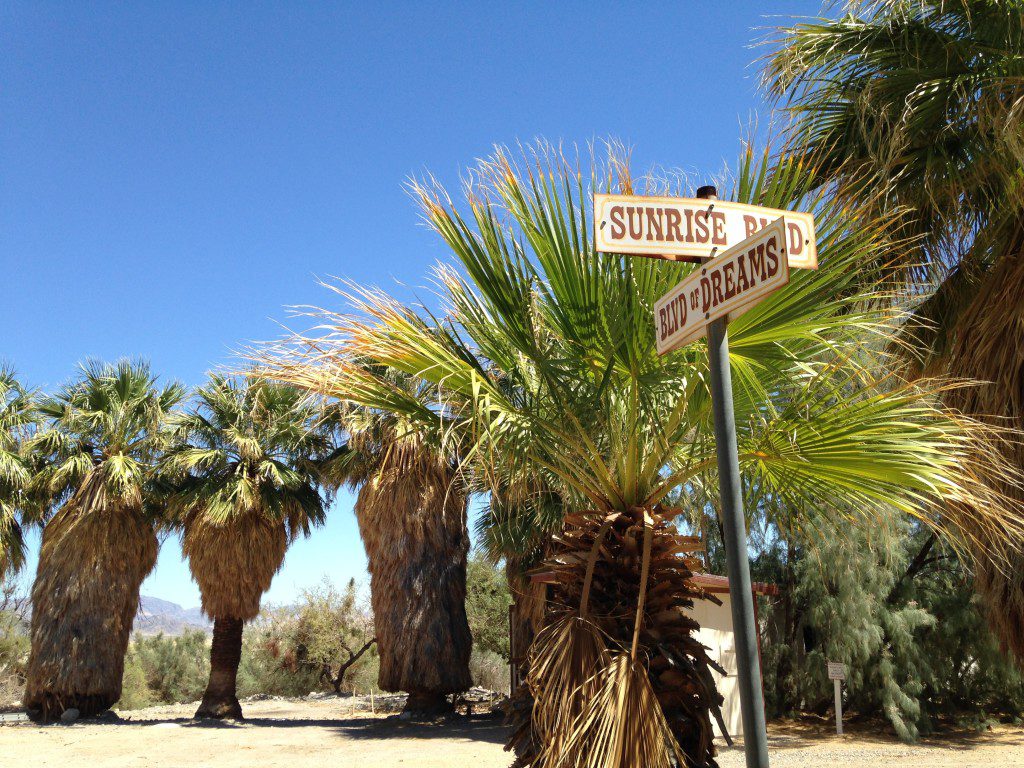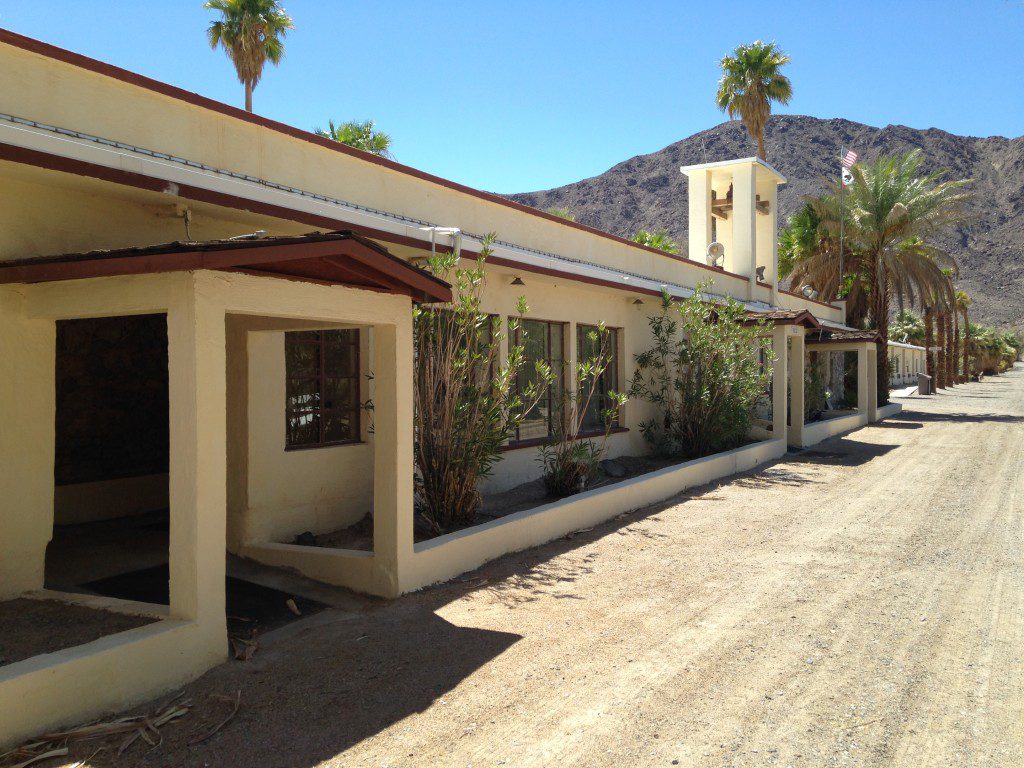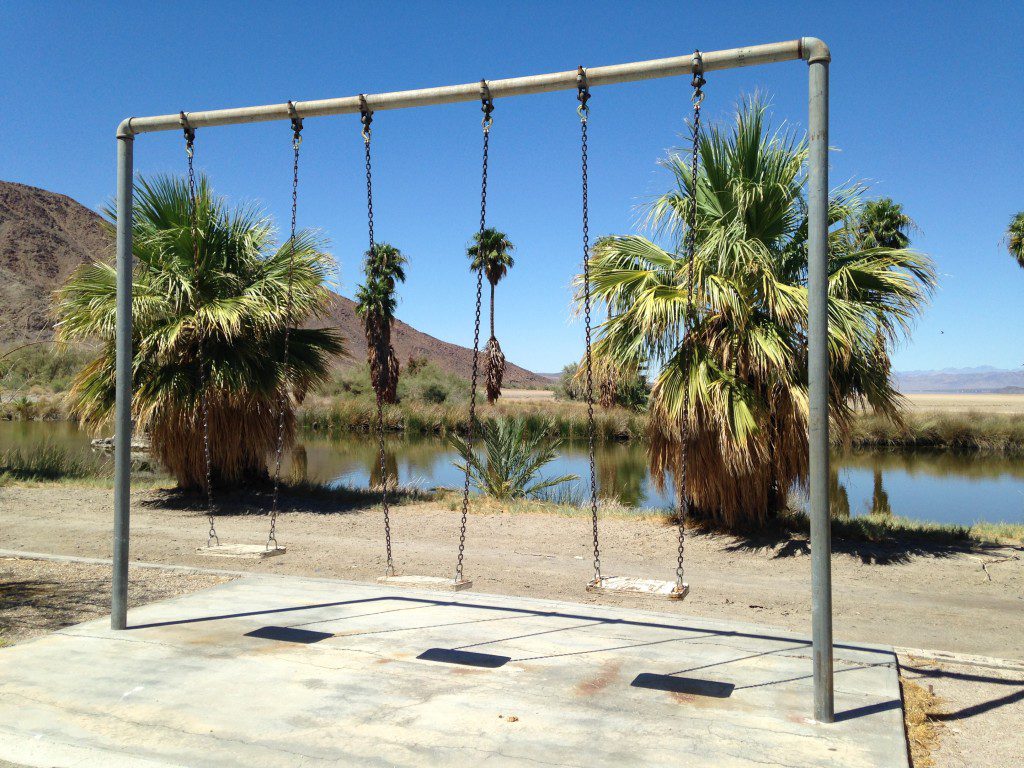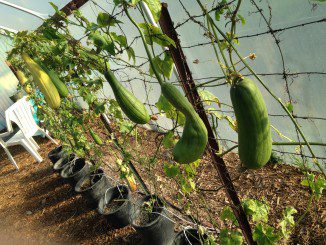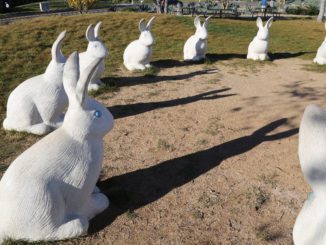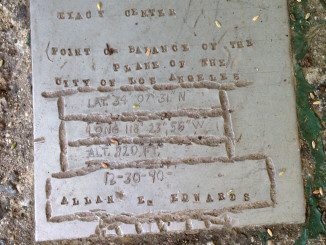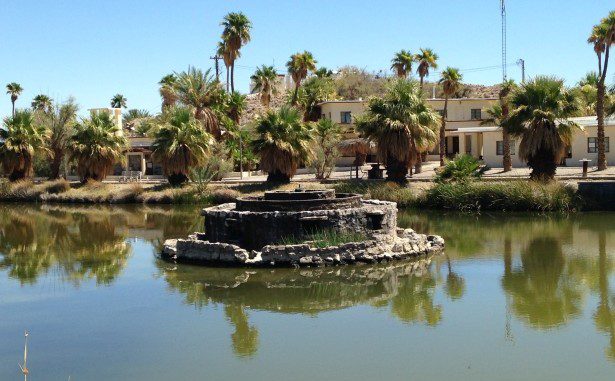
Many years ago, I took a month off of life and drove across this vast land with a buddy. It was a goofy trip, an era of pure youthful innocence, and a moment in time where two dudes from the Midwest became privy to how strange and wonderful the West Coast could be.
Over the course of our time on the road, we ate lots of beef jerky topped with Arby's sauce (our cuisine of choice at the time), stayed in many shitty hotel rooms and saw tons of wacky things. However, one thing I vividly remember is a road sign located near the California/Nevada border; the king of all randomly named towns. It read "Zzyzx Road,” referring to the next stop off the freeway, a name that has perplexed/haunted me for many years after.
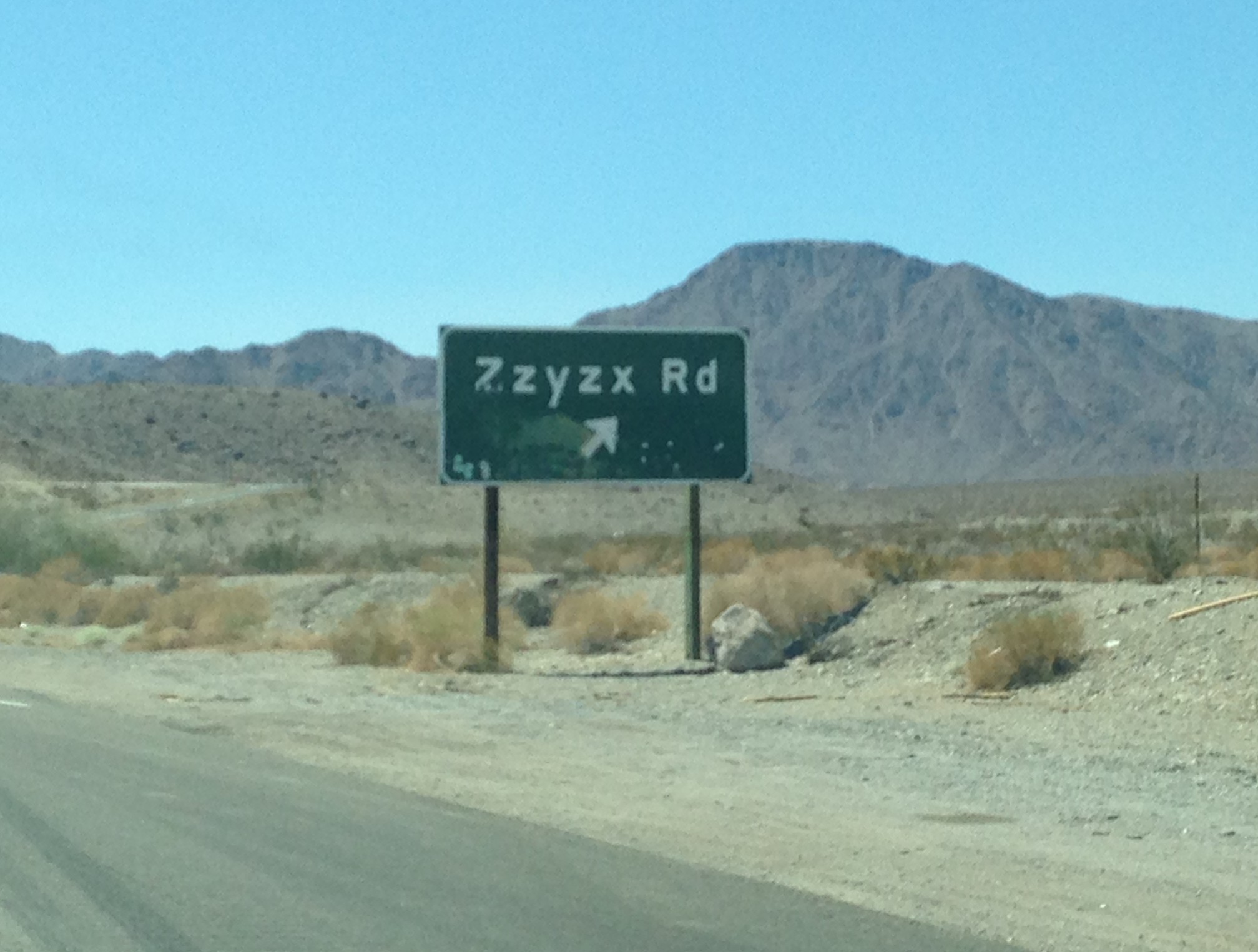
Just look at that sign! Aside from holding the distinction of being America's (maybe the world’s?) most oddly named highway exit, what does it actually mean? Is it really real, for real? Could it be some kind of a motorist death trap? OR maybe it's a desert paradise, filled with fluffy cake, cherubic angels and colorful ambrosia of the gods? Anyone driving between Vegas and LA on Route 15 has asked these questions—well, maybe not the ambrosia one— and I’m sure marveling over its linguistic oddness has caused more than a few car accidents over the years. However, few have actually stopped to check out this mysterious paradox of a "road."
So what exactly does it all mean? Well, 5 VERY rocky (make sure you REALLY hate your car tires before entering) and desolate miles off a beaten dirt path takes you to...drumroll, please...a tiny desert community and science center! Underwhelmed? Sorta, but this is the legendary Zzyzx Road at its rawest.
It's actually quite a beautiful sight to see: an oasis that comes complete with ponds, rocks, palm trees, a broken boat and desert animals scurrying about. All seem a little weird and out of place with the dusty hills of the Mojave Desert as a backdrop, but that's all part of the odd charm of the area.
Once a place of human deceit and exploitation (see backstory below), the area is now owned by California State University and used as their desert research facility. In fact, the silky smooth palm trees of the area are now surrounded by teaching centers, research labs, and even street signs. It feels like a little California ghost town, but way smarter.
All in all, it’s a pretty nice and tranquil place, but that the 110 degree heat— coupled with extreme isolation— make the trip a little nerve wracking. The Mojave can truly be deadly for those who are unprepared, especially if you sunburn or dehydrate easily. However, the sense of heatstroke-induced panic slowly turns into glorious ecstasy once you realize you've finally conquered your fears (and the fears of your road tripping forefathers before you) and breathed the air of the legendary Zzyzx Road.
Take the exit, eat it up, and be proud.
HOW THE HELL DID THIS HAPPEN?
The actual spring has been around for a longgggg time, but notoriety didn't plague the area until 1944, when Curtis Howe Springer proclaimed it Zzyzx (figuring that it was the last word in the English language, thus helping him stand out more in the phone book) and established a Health spa on the property.
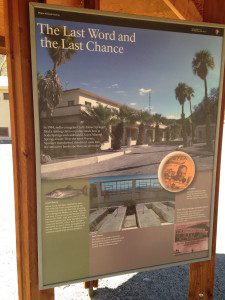 Curtis, was your classic huckster— even earning the title "King of Quakes" from the American Medical Association— and planned to make a quick buck off the land by proclaiming it holy. He’d eventually build a hotel, church, airstrip, castle and radio station, which were all part of a giant ruse to con clientele into joining his made-up "utopia". For a while his shenanigans actually worked, and people came from all over to be "healed' by the springs, despite zero proof that he even owned the land.
Curtis, was your classic huckster— even earning the title "King of Quakes" from the American Medical Association— and planned to make a quick buck off the land by proclaiming it holy. He’d eventually build a hotel, church, airstrip, castle and radio station, which were all part of a giant ruse to con clientele into joining his made-up "utopia". For a while his shenanigans actually worked, and people came from all over to be "healed' by the springs, despite zero proof that he even owned the land.
In 1974, the government finally cracked down on Curtis, stripping him of his land and evicting his followers. They even took it one step further and jailed him under false claims of medicine. With this raid, the Zzyzx health spa era was finally over, but the name would remain in infamy for decades.
Eventually, in 1976, the Bureau of Land Management took over the property and allowed California State University to use the land for their Desert Studies Center, which still remains to this day.
CHECK IT OUT
[envira-gallery id="1370"]


